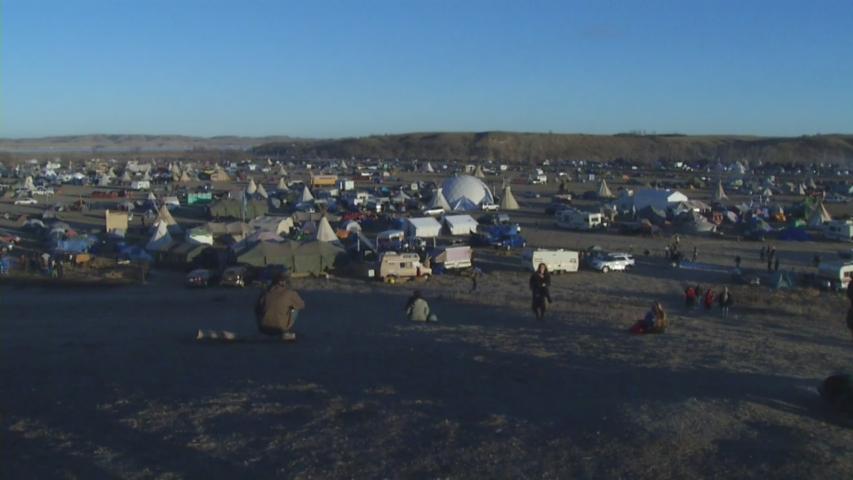
It feels like it’s been a while since there were any rays of hope in the news as of late, but for what seems like the first time in a long time, we’ve got some – the US Army Corps of Engineers will begin looking for an alternate route for North Dakota Access Pipeline.
In what is a massive victory for the Standing Rock Sioux Tribe and peaceful protestors everywhere, The Department of the Army announced on December 4th that it would not allow the Dakota Access Pipeline to be drilled under a dammed section of the Missouri River. Instead, the US Army Corps of Engineers said it would seek alternative paths to construct the pipeline, which means that the sacred lands of Standing Rock on the Sioux Tribe reservation lands will be left unfettered by the construction and routing of the pipeline.
The $3.7 billion “DAPL” project had quickly become a point of international emphasis, as stories of peaceful protestors being harassed and harangued by Army reservists and sheriff’s deputies began to make their way out into the ether. The growing concern over disappearing Native Lands brought thousands to the front lines of Standing Rock as Sioux Tribe members protested peacefully in defense of their land, in turn bringing attention to the vast teepee and yurt laden lands that were once in limbo.
Energy Transfer Partners – the company funding a large portion of the DAPL initiative and handling most of the day to day operations – had no immediate response to the US Army Corps of Engineers’ decision, but the company has said in the past that they would not necessarily entertain the notion of seeking different routes for constructing the pipeline. They are now left with no other option to but reroute the pipeline which would transport nearly 550,000 barrels of oil a day to a terminal point in Illinois.
On the side of the protestors, relief would be an understatement, as many environmental groups are applauding the US Army Corps of Engineers’ decision and hailing the Standing Rock Water Protectors as heroes for their efforts. The decision brings double relief to those found in the Oceti Sakowin campsite just outside the frontlines of the pipeline construction site, as any further extension of the standoff would have forced protestors to suffer through the brutal North Dakota winter.
The protestors at Standing Rock – led by the aforementioned Standing Rock Water Protectors – had argued that the pipeline’s projected path had been routed too close to their drinking water, stating that any spill could conceivably poison their primary source of drinkable water. With news of the US Army Corps of Engineers’ decision, many let out a final rallying cry of the Water Protectors – “Mni wiconi!” which means “water is life,” in the Sioux native tongue.
While the initial conflict has been resolved, this unfortunately may not be the last we see of the DAPL conflicts popping up in the future. Many will remember the brief allegations of physical harassment and harm between protestors and the local Sheriff’s deputy office at Standing Rock, whose demonstrations had been labeled as unlawful protest. Furthermore, many associated with Energy Transfer Partners have bemoaned the decision as being wholly political, and they remain hopeful that president-elect Donald Trump will look to reconsider the DAPL after his inauguration.Trump has said in the past that he supports the construction of the pipeline (but it should be noted that Trump owns stock in Energy Transfer Partners). So there is still plenty to sift through in the coming weeks with regard the pipeline’s future, but for the time being, the one thing we do know is that it will not route through Standing Rock.



